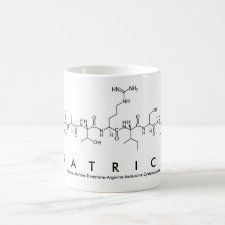
Authors: Eersels K, Lieberzeit P, Wagner P
Article Title: A Review on Synthetic Receptors for Bioparticle Detection Created by Surface-Imprinting Techniques - From Principles to Applications.
Publication date: 2016
Journal: ACS Sensors
Volume: 1
Issue: (10)
Page numbers: 1171-1187.
DOI: 10.1021/acssensors.6b00572
Abstract: The strong affinity of biological receptors for their targets has been studied for many years. Noncovalent interactions between these natural recognition elements and their ligands form the basis for a broad range of biosensor applications. Although these sensing platforms are usually appreciably sensitive and selective, certain drawbacks are associated with biological receptors under nonphysiological conditions in terms of temperature, pH, or ionic strength. Therefore, there are considerable efforts to mimic such molecular interactions with robust, synthetic receptors. Molecular imprinting is the best-known technique to obtain antibody mimics by synthesizing a polymer matrix in the presence of a template species, such as molecules or larger aggregates. Extraction of the template results in sterically and functionally adapted binding cavities in or on a porous matrix. Although in principle possible, the detection of larger bioparticles such as proteins, microorganisms, or cells remains challenging when using the classical MIP concept. To tackle inherent difficulties, extending the concept of molecular imprinting toward surface imprinting is a promising approach: Here, binding cavities are formed directly on the surface of a cross-linked polymer layer, thus facilitating the removal of the templates. This article reviews the main surface-imprinting techniques and focuses on the implementation of surface-imprinted polymers (SIPs) into various biomimetic sensors and related applications. In addition, we provide an outlook on emerging research on surface imprinting and the development of biomimetic tools for diagnostic purposes
Template and target information: Review - MIPs for bioparticle detection
Author keywords: biomimetic sensors, Biotechnology, macromolecular bioparticle detection, medical diagnostics, noncovalent interactions, Surface imprinted polymers



Join the Society for Molecular Imprinting

New items RSS feed
Sign-up for e-mail updates:
Choose between receiving an occasional newsletter or more frequent e-mail alerts.
Click here to go to the sign-up page.
Is your name elemental or peptidic? Enter your name and find out by clicking either of the buttons below!
Other products you may like:
 MIPdatabase
MIPdatabase









